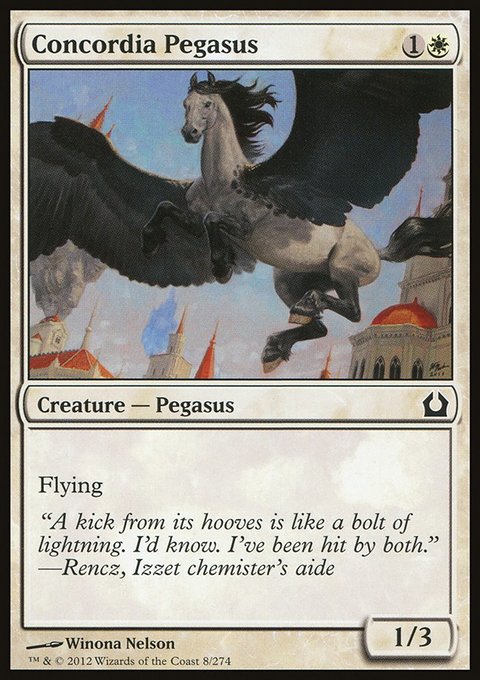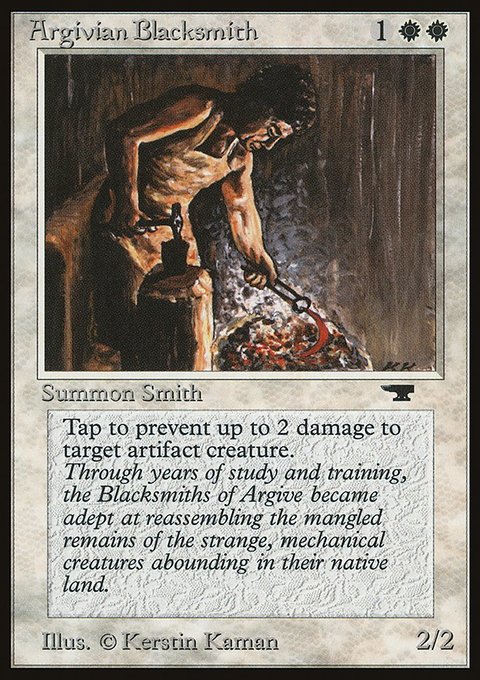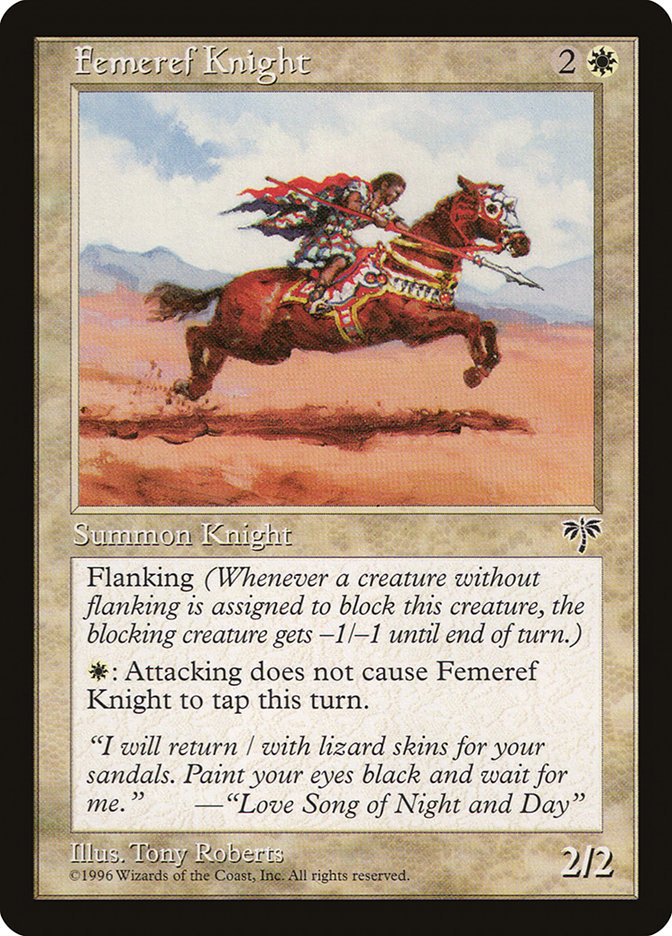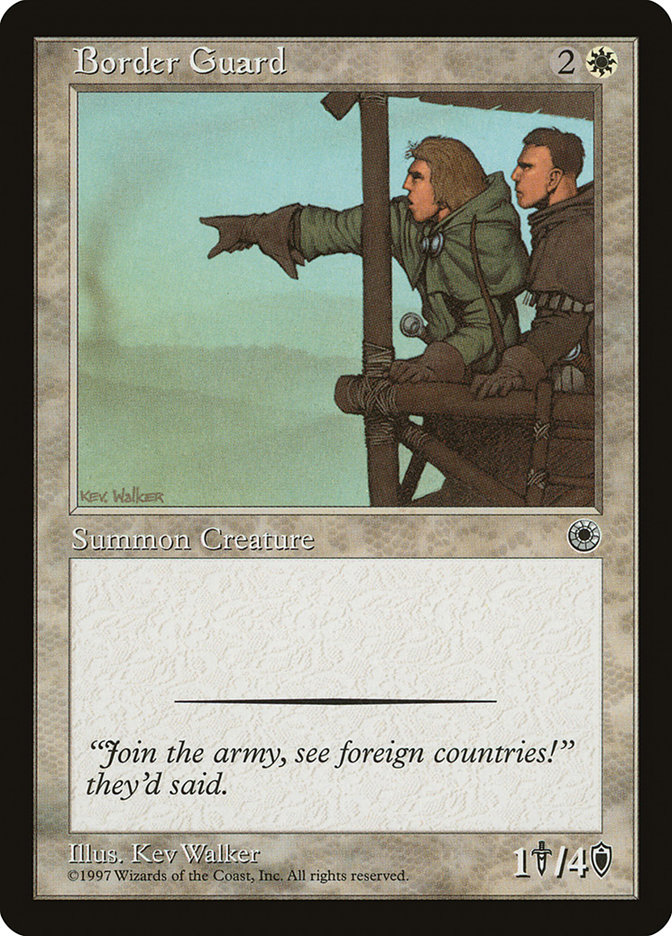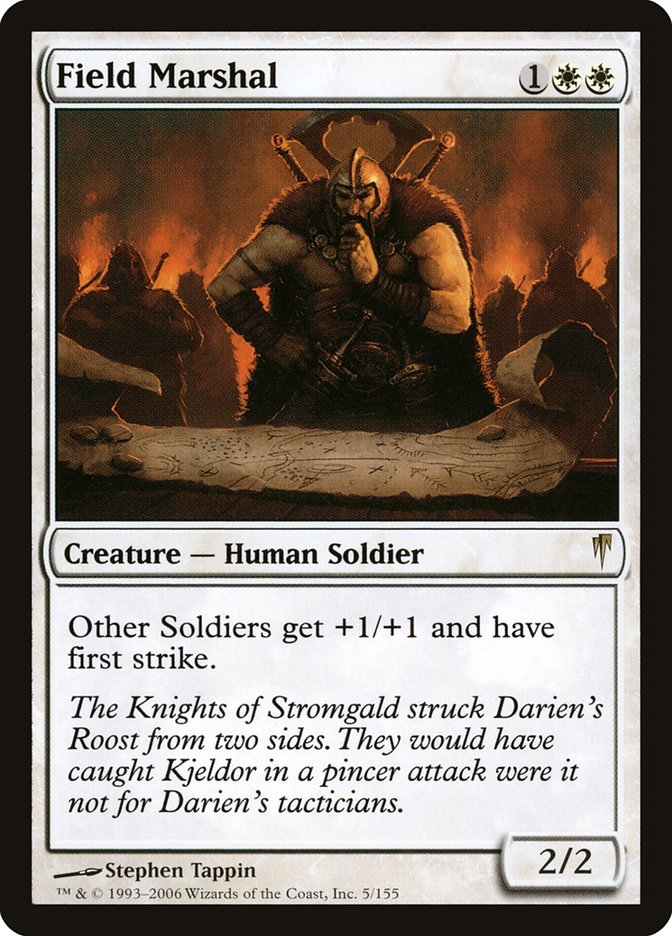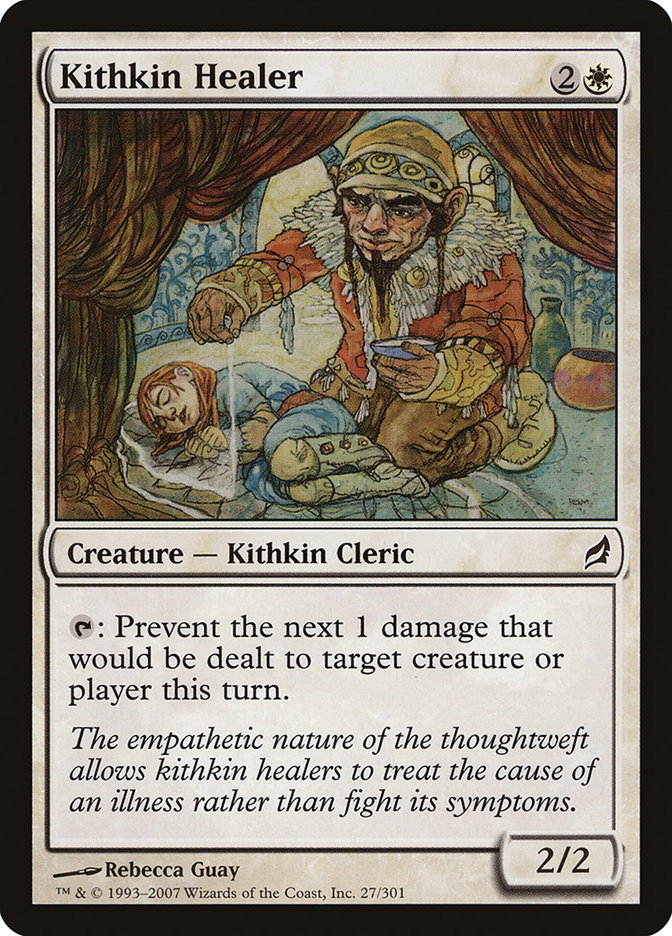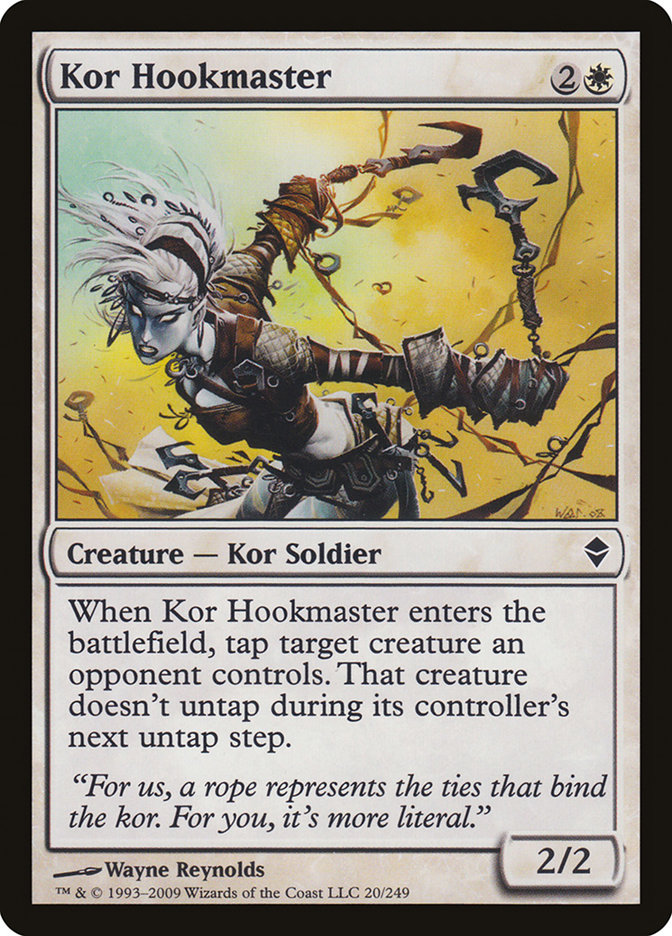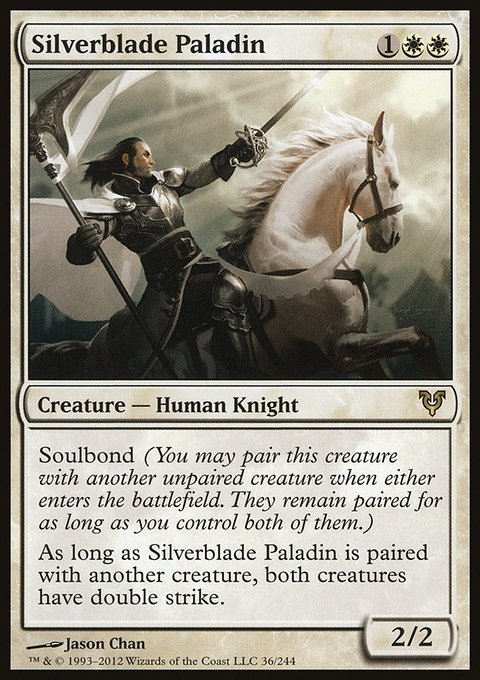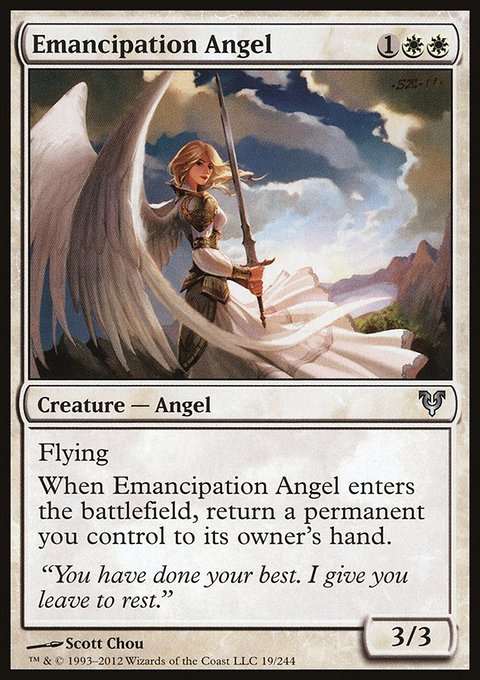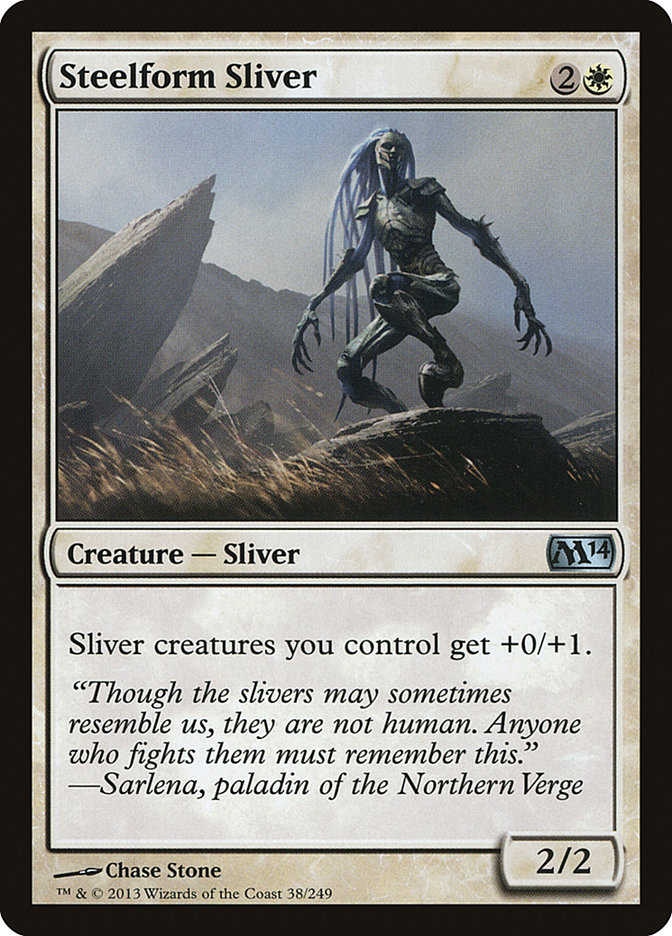Águila de la Guardia Carta MTG
Texto de la carta
Vuela, vigilancia.
"Vi a nuestras águilas volar en círculos a varios estadios de distancia. Fue entonces cuando di la orden de acelerar el paso. Supe que nos necesitaban en casa". —Kanlos, capitán akroniense
Cartas Similares
El Águila de la Guardia es una criatura voladora que los jugadores de MTG a menudo comparan con otras con habilidades y costos similares. Se destaca entre sus pares del aire al proporcionar vigilancia junto con su capacidad de volar, lo que le permite atacar sin enderezarse. Una carta común para contrastar con el Águila de la Guardia es el Halcón del Sanador. A pesar de ser más pequeño, el Halcón del Sanador ofrece vínculo vital, lo que puede dar una ventaja sutil pero significativa en estrategias basadas en la vida.
Otra carta que vale la pena mencionar es el Pegaso de Concordia. Similar al Águila de la Guardia, cuenta con la habilidad de volar pero carece de vigilancia. Sin embargo, se compensa con un costo de lanzamiento más bajo, lo que lo convierte en una opción viable más temprano en el juego. El Mensajero Celestial, aunque un poco más pesado en la escala de maná, aporta tanto el vuelo como la instantaneidad a la mesa, brindando a los jugadores capacidades defensivas sorpresa junto con un potencial ofensivo.
Cuando se evalúan criaturas voladoras en el mismo rango de maná, el Águila de la Guardia ocupa una posición única. Con un equilibrio entre poder y resistencia, junto con la vigilancia, ofrece una postura agresiva al tiempo que mantiene una postura defensiva, lo que lo convierte en un básico para aquellos que buscan preservar la presencia en la mesa mientras aplican continuamente presión desde los cielos.
Cartas similares a Águila de la Guardia por color, tipo y coste de maná
Aspectos Positivos de la Carta
Ventaja de Carta: El Águila de la Vigilancia no otorga directamente ventaja de cartas en el sentido tradicional, ya que no te permite robar más cartas. Sin embargo, ofrece una valiosa presencia en el campo de batalla con su habilidad de vuelo, lo que le permite evadir a las criaturas terrestres y mantener la presión ofensiva, lo que puede resultar indirectamente beneficioso.
Aceleración de Recursos: Aunque no es una carta que acelera recursos directamente, la eficacia en costos del Águila de la Vigilancia permite tener una curva de juego fluida en MTG. Desplegar una amenaza en el aire en el turno tres puede conducir a jugadas más impactantes. Complementa mazos que buscan optimizar la utilización de maná en cada etapa del juego.
Velocidad Instantánea: El Águila de la Vigilancia opera a velocidad de conjuro, pero su rasgo de vigilancia asegura que siga siendo una amenaza ofensiva y un activo defensivo sin necesidad de inversión adicional de maná. Esto permite a los jugadores mantener la disponibilidad óptima de maná para otras interacciones a velocidad instantánea, asegurando que nunca los tomen por sorpresa.
Aspectos Negativos de la Carta
Costo de Maná Específico: El Águila de la Vigilancia requiere una combinación específica de maná para ser lanzada, exigiendo dos manás blancos en su costo. Esto potencialmente puede restringir la inclusión de la carta solo en mazos que sean ricos en maná blanco o que tengan una base de maná sólida para producir los colores necesarios de manera confiable.
Costo de Maná Comparativamente Alto: Con un costo de lanzamiento de tres manás por una criatura voladora 2/1, el Águila de la Vigilancia puede considerarse costosa. Hay otras criaturas que ofrecen más poder o habilidades adicionales por un costo similar o inferior, brindando un mejor retorno de la inversión del maná gastado.
Requisito de Descarte: Aunque el Águila de la Vigilancia no tiene un requisito de descarte en sí misma, al ser una carta poco impactante en la fase tardía del juego a menudo se convierte en candidata para ser descartada cuando se necesite buscar cartas más poderosas o cuando sea requerido por otros efectos de cartas.
Razones para Incluirla en tu Colección
Versatilidad: El Águila de la Vigilancia es una criatura confiable que puede ser incluida en una variedad de mazos blancos. Con el vuelo como habilidad inherente, sirve tanto como amenaza ofensiva como bloqueador defensivo contra criaturas no voladoras.
Potencial de Combo: Esta carta se sincroniza bien con estrategias que capitalizan en criaturas voladoras. Su capacidad de elevarse al cielo la convierte en una candidata sólida para mazos centrados en la superioridad aérea y cartas que potencian criaturas voladoras.
Relevancia en el Meta: Dado su carácter de criatura voladora, el Águila de la Vigilancia a menudo puede evadir eliminaciones y bloqueadores comunes basados en tierra. En metas donde prevalecen las fuerzas terrestres, contar con activos aéreos puede proporcionar una ventaja distintiva, haciendo de esta carta una adición estratégica a tu colección.
Cómo vencer al Águila de la Vigilancia
El Águila de la Vigilancia es una carta de criatura evasiva que cumple su función en mazos de combate aéreo. Con el vuelo como su habilidad principal, esta criatura resulta ser un atacante confiable en los cielos. Sin embargo, cada carta tiene su contrajuego, y comprender cómo neutralizar a este ave vigilante puede inclinar el juego a tu favor.
Para contrarrestar a este enemigo alado, considera hechizos o habilidades que anulen el vuelo, obligando a la criatura a enfrentarse en el campo de batalla donde es más vulnerable. Constructos como el Arquetipo de la Imaginación pueden eliminar el vuelo a todas las criaturas oponentes, anulando la ventaja del Águila. Para soluciones más directas, busca hechizos de eliminación. Eliminaciones dirigidas como la Cuchilla de Perdición o soluciones amplias como el Día del Juicio pueden limpiar fácilmente el tablero de criaturas voladoras como el Águila de la Vigilancia sin mucho esfuerzo.
Además, introducir criaturas con "alcance" en tu formación proporciona una amenaza constante contra atacantes voladores. Cartas como la Araña Tela de Seda no solo bloquean a los voladores, sino que también pueden eliminarlos. Finalmente, planificar tus jugadas para asegurar que haya maná disponible para respuestas a velocidad instantánea mantendrá a raya las amenazas aéreas de tu oponente. Con la estrategia correcta, asegurar que esas águilas no vuelen sin control es completamente factible.
Donde comprar
Si estás buscando comprar una carta MTG Águila de la Guardia de un coleccione específico como Journey into Nyx and Magic Origins, existen varias opciones confiables que debes considerar. Una de las fuentes principales es tu tienda de juegos local, donde a menudo puedes encontrar paquetes de refuerzo, cartas individuales y mazos preconstruidos de colecciones actuales y pasadas. A menudo ofrecen el beneficio adicional de una comunidad donde puedes intercambiar con otros jugadores.
Para un inventario más amplio, particularmente de colecciones más antiguos, mercados en línea como TCGPlayer, Card Kingdom y Card Market ofrecen amplias selecciones y te permiten buscar cartas de colecciones específicos. Las plataformas de comercio electrónico más grandes como eBay y Amazon también tienen listados de varios vendedores, lo que puede ser un buen lugar para buscar productos sellados y hallazgos raros.
Además, el sitio oficial de Magic suele tener un localizador de tiendas y listas de minoristas para encontrar Wizards of the Productos con licencia costera. Recuerde comprobar la autenticidad y el estado de las cartas al comprarlas, especialmente a vendedores individuales en mercados más grandes.
A continuación se muestra una lista de algunos sitios web de tiendas donde puede comprar las Águila de la Guardia y otras cartas MTG:
 COMPRAR
COMPRAR BurnMana es un socio oficial de TCGPlayer
- eBay
- Card Kingdom
- Card Market
- Star City Games
- CoolStuffInc
- MTG Mint Card
- Hareruya
- Troll and Toad
- ABU Games
- Card Hoarder Magic Online
- MTGO Traders Magic Online
Ver productos MTG
Impresiones
La carta Águila de la Guardia Magic the Gathering se lanzó en 2 colecciones diferentes entre 2014-05-02 y 2015-07-17. Ilustrado por Scott Murphy.
| # | Liberado | Nombre | Código | Símbolo | Número | Marco | Disposición | Borde | Artista |
|---|---|---|---|---|---|---|---|---|---|
| 1 | 2014-05-02 | Journey into Nyx | JOU | 9 | 2003 | Normal | Negra | Scott Murphy | |
| 2 | 2015-07-17 | Magic Origins | ORI | 275 | 2015 | Normal | Negra | Scott Murphy |
Legalidades
Formatos de Magic the Gathering donde Águila de la Guardia tiene restricciones
| Formato | Legalidad |
|---|---|
| Commander | Legal |
| Legacy | Legal |
| Paupercommander | Legal |
| Modern | Legal |
| Oathbreaker | Legal |
| Pauper | Legal |
| Vintage | Legal |
| Duel | Legal |
| Pioneer | Legal |
| Penny | Legal |

Guía para la habilidad de la carta Vigilancia
En el universo estratégico de Magic: The Gathering (MTG), la habilidad de vigilancia se destaca como una poderosa herramienta para los jugadores. Esta potente palabra clave permite a las criaturas atacar sin tocar, manteniéndolas listas y alertas para defenderse de las amenazas entrantes. Representa un equilibrio perfecto entre agresión y defensa, ofreciendo un enfoque dinámico del juego. Profundicemos en cómo la vigilancia da forma al campo de batalla.



